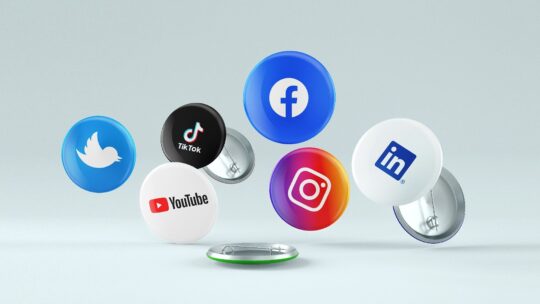
[Editor’s Note: Even experienced PR professionals need a refresher on the basics periodically, as well as insight about newer concepts. Whether it’s how to become a better writer or a review of PR ethics, we aim to provide you with content about a variety of topics and issues. Hence, our Explainer series.]
Previous posts looked at the Barcelona Principles, the Metaverse, off the record and sonic branding. Today we review the differences in social conversation platforms.]
What are Social Conversation Platforms?
What used to be just considered “social media platforms” has evolved into a group of its own—focusing on text-based chat surrounded by trending topics. Whereas TikTok, Snapchat and Instagram are more image- and video-focused, and platforms like Facebook and LinkedIn are more connections-focused, platforms such as Threads, Bluesky and Twitter (now X) allow users to discuss, post and even debate issues and content through simple text updates and replies.
A rundown of current popular apps for social conversation:
Twitter/X: The OG, which recently underwent a rebrand as “X”, introduced social media users to 140-character posts in 2006. Twitter’s popularity really took off in 2007 during the annual South by Southwest Interactive (SXSWi) conference, when attendees found and used the app to connect with other festival-goers. While it’s been sold and undergone changes over the years, functionality remains the same, and still reigns supreme as the app to use to connect with others during live events and breaking news.
Threads: Threads, owned by Meta and known as the most serious “Twitter-rival,” launched on July 5, 2023. It made history by gaining the most users for an app in the shortest amount of time (100 million in 5 days). This, of course, was due to its connection to Instagram, which allowed Instagram users a seamless Threads signup experience. Threads, while similar to Twitter in user experience, lacks some features such as trends and search. It tends to be a “sunnier” version of Twitter in voice and content.
Bluesky: Former Twitter CEO Jack Dorsey began work on Bluesky back in 2019, but it’s really started to gain traction since its beta launch in 2023. The platform looks and works similarly to Twitter, including tabs for “What’s Hot” or popular, trending posts and “Popular With Friends.” A Feeds feature operates much like Twitter Lists for those seeking more focused content and conversation. It also includes an extensive moderation section—a nod to the privacy and safety issues Twitter users may have experienced and complained about in the past. Unfortunately, Bluesky is still only available by invite code, so you may need to ask around for access.
Mastodon: Mastodon may be the most confusing of the social conversation platforms, but its users seem to be extremely loyal and committed to its success. Mastodon is a decentralized social media network, which means it is not a corporation, but an open source platform that is free and available for anyone to use, learn from and add to. Mastodon is good for community building, as you can join separate groups hosted on various servers, based on specific interests. But a user can still see the entire Mastodon user feed from all of the separate groups to avoid life in a bubble. It may take some time to build up an audience, but the tools are there if your users are.
Spill: Spill is one of the newest and most creative options for text-based feed communications. A group of ex-Twitter employees launched Spill in June 2023, which is quickly becoming an alternative for Black Twitter users. According to NBC News, “many within the community have voiced concerns about inadequate moderation of hate speech on Twitter, arguing that the app has become an increasingly “toxic” space under Musk’s leadership.” Spill is the most visual of the posting platforms, in which users post meme-like text over photos, gifs or videos to create the look of an image card.
Why it Matters to Communicators
It’s important, particularly in an era where traditional social media platforms are no longer the user juggernauts they used to be, to pay attention to where your audience is and why. Yes, there are more platforms, which makes for more segregation of information, but it also allows users more options in how they receive information.
Serving the public important information is one of the top priorities of communicators and PR professionals. Knowing where your users are and, more importantly, why should be a part of any good social media and PR strategy. The old ways of social distribution may all be for naught if your audience has gone elsewhere. Do the research and the work, and your brand will benefit.
And it’s important to remember that even though new platforms emerge, it’s not necessary to immediately jump in—especially if your audience is not there. That’s why doing the research is essential to making decisions on where to spend your time and resources.
More Resources for Conversation Platforms and Strategy:
- Top Tips: Evaluating Social Media Platforms (Like Threads) for Accessibility
- PR Roundup: Threads Launches, GQ Pulls Piece, Barbie-mania
- Top Five Tips: As Twitter Changes, so Does Pitching
- Exploring Spill: A Promising New Social Media Contender
- Navigating the Sunset: Insights on Deactivating Social Media Accounts
- Why Owning Your Media is Critical in an Age of Uncertainty
Nicole Schuman is senior editor for PRNEWS. Follow her @buffalogal
